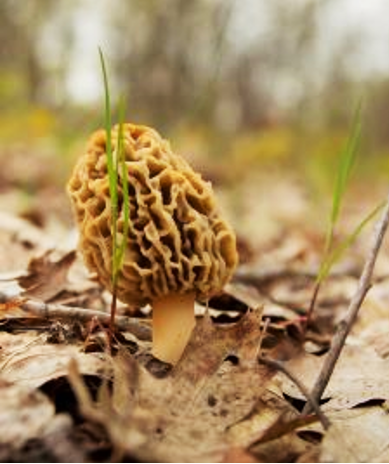Morels: The Northern White Cedar of the Fungi World
 As you all of course know, northern Michigan is best known as the home to White Cedar and our little White Cedar log home company (at least that is our opinion…)*. But a close second has to be that elusive, unpredictable, Springtime king of the mushroom realm — the morel. Our neighbor just down the road from us, Mesick, is even considered the unofficial Mushroom Capital of the United States because of this forager favorite.
As you all of course know, northern Michigan is best known as the home to White Cedar and our little White Cedar log home company (at least that is our opinion…)*. But a close second has to be that elusive, unpredictable, Springtime king of the mushroom realm — the morel. Our neighbor just down the road from us, Mesick, is even considered the unofficial Mushroom Capital of the United States because of this forager favorite.
They only appear from late March through May, and they’re nearly impossible to farm or grow indoors, which is why many people turn to the woods to forage for morels. The thrill of finding these fungi is even more satisfying than eating them. The best bet for morel mushroom hunting is to head out to a forest or nature park. Local lore has it, that usually, the mushrooms grow on the edges of those wooded areas, especially around oak, elm, ash, and aspen trees. Look for dead or dying trees while you’re on the hunt too, because morels tend to grow right around the base.
WARNING! Watch out for false morel mushrooms, which can be toxic. They look a bit like real morels from a distance, but when you get closer, it should be clear that they’re not. Most false morels will have wrinkly, almost shriveled-looking caps instead of pits.
If you are lucky enough to hunt down these woodland treats, here’s an old-school standby:
morels
scallions and/or garlic
butter
olive oil
white wine
fresh parsley
- Sauté scallions and/or garlic with morels in the combo of oil and butter until morels are slightly browned
- Remove morels and de-glaze pan with white wine.
- Return morels with freshly chopped parsley.
- Toss and serve.
Enjoy!
*Editor’s note: No disrespect to the world class fishing, renowned vineyards/wineries, breathtaking scenery and vistas, restaurants, breweries, ski areas……….



